1. Flint, Michigan
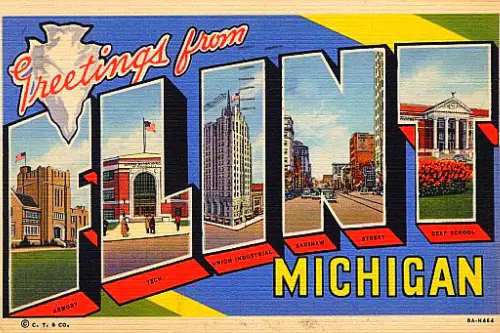
Flint’s struggles are well-documented, particularly the water crisis that brought national attention. Beyond the water contamination, Flint has suffered from the decline of the auto industry, leading to high unemployment and poverty rates. The city’s infrastructure has deteriorated, and many residents have been forced to leave in search of better prospects. The combination of economic hardship and environmental challenges has made it increasingly difficult for Flint’s residents to realize the American Dream, according to the Ford School of Public Policy.
The water crisis, which began in 2014, exposed systemic failures and has had long-lasting effects on the community. Despite efforts to provide clean water and address health concerns, many residents continue to face health issues related to lead exposure. The economic decline has also led to a significant reduction in property values, making it challenging for homeowners to sell or invest in their properties. These compounded issues have left many residents feeling disillusioned and uncertain about the future. Flint has become a symbol of governmental neglect, and many residents have had to adjust their aspirations as a result of the continued difficulties in obtaining safe drinking water, stable employment, and the financial means to own a home.
2. Youngstown, Ohio
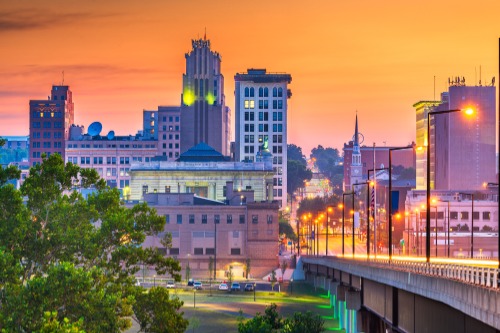
Youngstown’s economy was once dominated by steel manufacturing. The industry’s decline led to widespread job losses and a significant population decrease, according to The Center Square. The city has struggled to reinvent itself, with limited success in attracting new industries. High unemployment and poverty rates persist, and many residents have left in search of better opportunities. The dream of upward mobility remains elusive for many in Youngstown.
As the steel mills closed, they left behind a devastated cityscape, with abandoned factories and crumbling infrastructure. While there have been efforts to attract technology startups and diversify the local economy, Youngstown has struggled to shake off the economic shackles of its industrial past. Additionally, the population has dwindled over the years, with many young people leaving the city in search of work elsewhere, resulting in a lack of energy and vitality. With so many residents finding it difficult to make ends meet, the once attainable dream of homeownership and financial stability feels increasingly out of reach. Youngstown serves as a stark example of how cities that were once at the heart of American industry are now struggling to provide opportunities for future generations.
3. Saginaw, Michigan
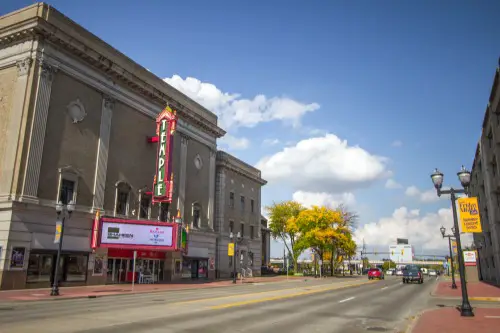
Saginaw, once a thriving industrial hub, has seen its fortunes wane over the decades. In the mid-20th century, it was celebrated as an “All-America City,” a testament to its prosperity and community spirit. However, the decline of the automotive industry, particularly General Motors’ departure, led to widespread job losses, The Guardian reports. This economic downturn resulted in a population decrease of over half, with many residents seeking opportunities elsewhere. The city’s demographics have shifted, with the white population dropping to less than 35%, while the Black and Latino communities have grown. Abandoned factories and empty homes now dot the landscape, serving as poignant reminders of a bygone era.
The economic challenges have been compounded by social issues. Saginaw consistently ranks as having one of the highest crime rates in both Michigan and the United States at large. In 2020, Saginaw had a homicide rate of 50.2 per 100,000 people, narrowly surpassing Detroit’s rate (49.7) and dwarfing the State and National Rates (7.6 and 6.5, respectively). These high crime rates have further eroded the sense of safety and community that once defined Saginaw. Moreover, the lack of opportunities for younger generations and the diminishing prospects for upward mobility leave many struggling to achieve the quintessential “American Dream” of financial security and homeownership. The city is stuck in a cycle of underinvestment and depopulation, making it difficult for residents to envision a prosperous future.
4. Buffalo, New York
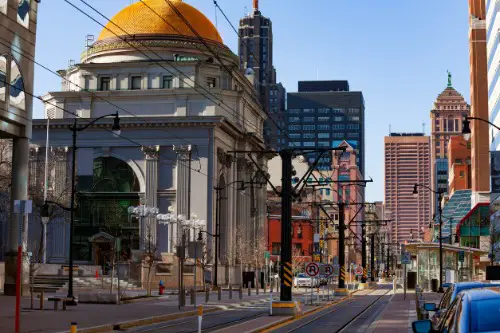
Buffalo’s story mirrors that of many Rust Belt cities. Once a bustling center of industry, it has grappled with deindustrialization and economic decline. The loss of manufacturing jobs led to a significant population exodus, and the city has struggled to diversify its economy. Efforts to revitalize urban areas and attract new technologies have met with limited success. Today, Buffalo faces challenges in providing affordable housing and employment opportunities, making it difficult for many residents to achieve the traditional American Dream, according to the Wall Street Journal.
The city’s East Side, in particular, has been left behind in redevelopment efforts. Once a thriving community, it now faces high unemployment rates, limited access to quality education, and a lack of essential services. The tragic mass shooting at the Tops Friendly Market in May 2022 highlighted the deep-seated issues of economic neglect and systemic inequality faced by residents. Despite these challenges, there is a strong sense of community resilience, with local organizations and residents working tirelessly to address these disparities. Buffalo is at a crossroads, and while there are glimpses of hope in certain revitalization projects, the broader city struggles to offer its residents the opportunity to achieve upward mobility, making it clear that the traditional American Dream is increasingly out of reach for many.
5. Toledo, Ohio
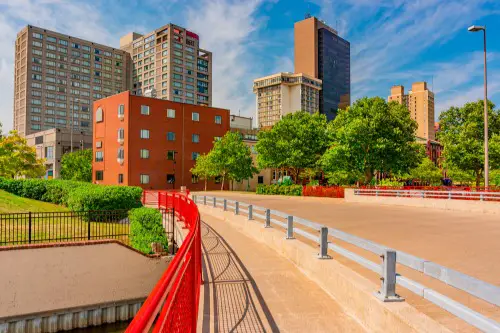
Toledo’s industrial decline mirrors that of other Rust Belt cities. Once a manufacturing powerhouse, it now faces challenges in diversifying its economy. The loss of manufacturing jobs has led to high unemployment and poverty rates. Efforts to revitalize the city have been slow, and many residents continue to struggle with economic hardship. The traditional path to the American Dream seems increasingly out of reach for many in Toledo.
Toledo’s automotive sector, once a major employer, has significantly diminished, leaving the city reliant on industries such as healthcare, education, and distribution. However, these industries have not been able to absorb the workforce displaced by the decline in manufacturing. Moreover, the lack of investment in infrastructure has led to a growing number of vacant properties and abandoned buildings. Public schools and city services are stretched thin, leading to lower quality of life and fewer opportunities for upward mobility. For many families, the dream of owning a home or securing a well-paying job is becoming harder to achieve as economic challenges continue to mount. As the city continues to grapple with the complexities of a changing economy, many of Toledo’s residents are left questioning if the American Dream is still possible for them.
6. Scranton, Pennsylvania
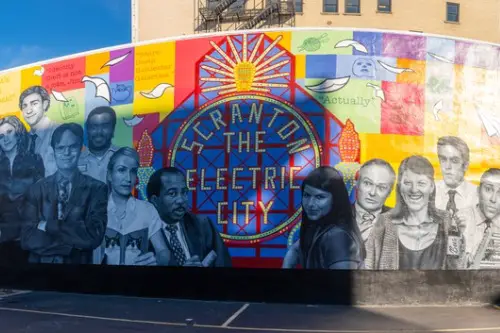
Scranton’s decline began with the fall of the coal and manufacturing industries. Once a thriving industrial city with a strong middle class, it now faces significant economic hardship, and efforts to reinvent itself have largely been unsuccessful. Unemployment rates remain high, and the city has struggled to attract new industries. Scranton’s economy now largely depends on service industries like healthcare, but they haven’t been enough to replace the lost manufacturing jobs, leading to stagnation and a sense of unfulfilled potential.
Urban blight is visible throughout the city, with many homes and buildings in disrepair. The real estate market has stagnated, and property values have been in decline for years. The city’s population has been shrinking for decades as people move away in search of better job opportunities elsewhere. Public schools and social services are also under strain, further perpetuating the cycle of poverty. The struggle to balance a shrinking tax base with the needs of the community has left the city vulnerable to a growing wealth gap, making it harder for many residents to achieve the classic goals of financial stability and homeownership that are associated with the American Dream.
7. Gary, Indiana
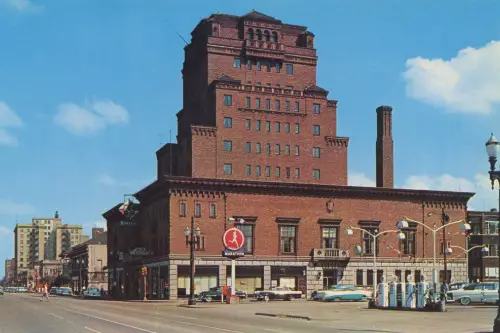
Gary’s decline is closely tied to the fall of the steel industry, according to The Guardian. Once a booming industrial city, it now faces high unemployment, poverty, and urban decay. Efforts to revitalize the city have been hampered by a lack of investment and a shrinking tax base. The challenges in attracting new businesses and industries have left many residents without viable employment options, making the pursuit of the American Dream a distant hope.
The city’s infrastructure has suffered due to years of neglect and financial constraints. Many neighborhoods are characterized by abandoned homes and vacant lots, contributing to a sense of desolation. Public services have been reduced, and the education system struggles to meet the needs of its students. These conditions have led to a cycle of poverty and disinvestment, making it difficult for residents to envision a brighter future. Gary’s challenges are compounded by its proximity to Chicago, which has drawn much of the economic attention away from the city, leaving it to flounder without the necessary support to rebuild. The once-thriving steel industry that fueled Gary’s economy has not been replaced by a sustainable and diversified workforce, making it increasingly difficult for residents to achieve upward mobility.
8. Detroit, Michigan
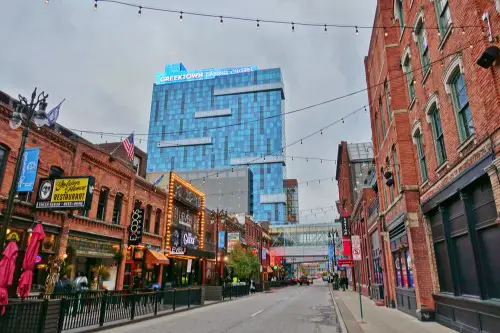
Detroit is perhaps the most famous example of an American city where the dream has dimmed. Once the powerhouse of the U.S. auto industry, Detroit’s story of decline is often linked to the mass departure of car manufacturing jobs, which began in the latter half of the 20th century. Once home to more than 1.8 million people, the city’s population has dwindled to less than 700,000. Along with the decline in population came the loss of tax revenue, which in turn crippled the city’s infrastructure and services.
The collapse of the auto industry hit the city’s economy hard, and despite efforts to revitalize Detroit, high unemployment, homelessness, and urban decay remain rampant. Downtown Detroit has seen significant development in recent years, but the gains are not felt equally across all neighborhoods. Areas such as the East Side and neighborhoods on the outskirts of the city continue to suffer from high poverty and crime rates. The effects of a bankrupt city government and the failure of previous regeneration projects have left residents feeling that the path to economic success has become increasingly elusive. The city’s struggles illustrate how far-reaching the consequences of deindustrialization can be, making the dream of upward mobility seem like a distant fantasy for many.
9. Camden, New Jersey
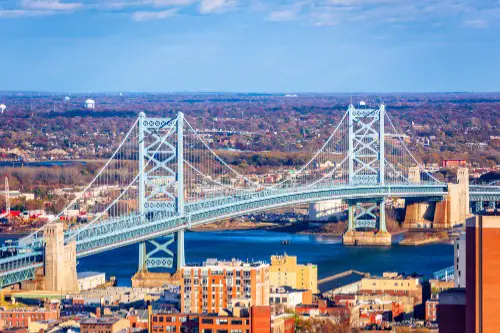
Camden is another city where the traditional American Dream is becoming increasingly difficult to realize. Located just across the river from Philadelphia, Camden was once a bustling center of shipbuilding, manufacturing, and the arts. However, as factories closed down and the economy shifted, Camden fell into a spiral of poverty, unemployment, and crime. The city’s population has steadily decreased over the years, and many who remain are left with few opportunities for advancement.
The educational system in Camden has also faced chronic underfunding, contributing to lower graduation rates and fewer pathways to higher education or skilled employment. Housing stock is deteriorating, with large swathes of the city marked by abandoned and decaying buildings. While the city has attracted some investment in recent years—such as the creation of a new waterfront park—these developments have yet to significantly improve the lives of the majority of residents. The struggle for affordable housing, high crime rates, and a lack of reliable employment options mean that many of Camden’s residents see the American Dream slipping further from their reach.
10. St. Louis, Missouri
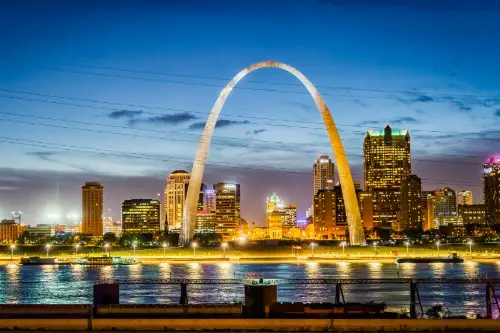
St. Louis has long been a city of contrasts—on one hand, it boasts impressive cultural landmarks and a thriving arts scene, but on the other, it grapples with issues like crime, poverty, and segregation. Once a leading manufacturing city, St. Louis has faced deindustrialization and the decline of its once-thriving steel mills and factories. The resulting job losses have had a lasting impact on the economy, leaving many residents without opportunities to achieve financial stability or upward mobility.
Over the years, St. Louis has seen significant population loss, particularly in the black community, as many moved out in search of better job prospects in suburban areas or other cities. The city’s neighborhoods are divided along racial and socioeconomic lines, which has contributed to disparities in education, healthcare, and housing. While the city has made efforts to revitalize downtown areas and attract new businesses, these projects often don’t trickle down to struggling neighborhoods. High crime rates, an underfunded public school system, and a lack of affordable housing continue to be obstacles for the majority of residents, further distancing them from the American Dream.
11. Akron, Ohio
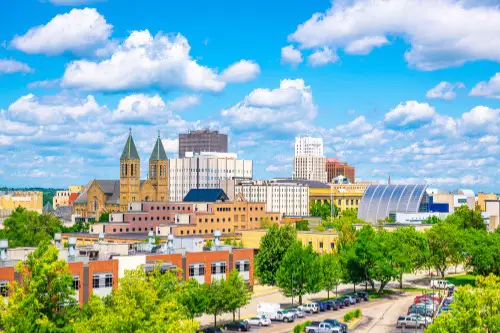
Akron, once the “Rubber Capital of the World,” is another example of a city that has struggled to recover from the loss of its industrial base. With the decline of the tire and rubber manufacturing industries, Akron has faced significant job losses, and many people have left the city in search of better opportunities. Although the city has made some progress in revitalizing certain areas, it remains heavily dependent on healthcare, education, and service industries, which haven’t been enough to offset the loss of manufacturing jobs that once supported the local economy.
Much like other Rust Belt cities, Akron is dealing with a shrinking population and increasing poverty levels. Neighborhoods on the city’s outskirts have become blighted, with vacant homes and abandoned commercial buildings. The local public schools, once a source of pride for the city, are now underfunded and struggling to meet the needs of students. As the cost of living rises and wages stagnate, the dream of owning a home or securing a stable job is becoming more difficult to attain for many in Akron. The city’s struggles are further exacerbated by a lack of new investments, and the dream of upward mobility feels increasingly out of reach for its working-class residents.
12. Springfield, Massachusetts
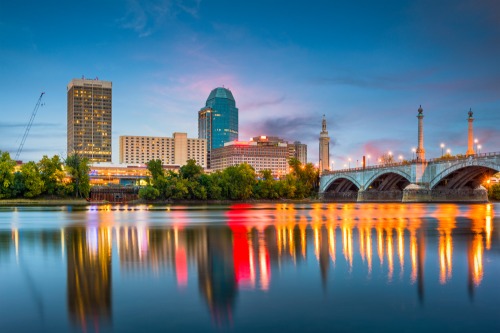
Springfield, located in Western Massachusetts, once boasted a diverse economy based on manufacturing, education, and health services. However, as industries like paper manufacturing and firearms production declined, the city’s economy faltered. Despite being home to prestigious institutions like Springfield College and the Basketball Hall of Fame, the city has struggled to maintain a sustainable economic base.
Springfield has a high crime rate and a public school system that faces budget constraints, making it difficult for residents, especially those in lower-income neighborhoods, to achieve economic success. The housing market has stagnated, and many properties are left vacant or in disrepair. Efforts to revitalize the city have been slow, and many people find themselves working in low-wage jobs with little chance for advancement. For many, the traditional goal of homeownership and financial security is a distant dream. With few job opportunities and a deteriorating public infrastructure, the people of Springfield are increasingly questioning if the American Dream is still attainable for them.
13. Birmingham, Alabama
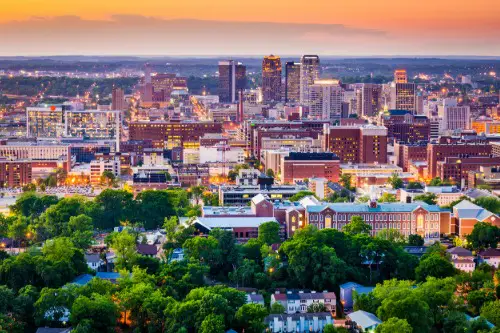
Birmingham’s story is one of transformation, but it has also faced many setbacks. Once a major center for the steel industry, Birmingham experienced a rapid decline as the industry moved overseas and technological changes reduced the need for manual labor. Though the city has made efforts to diversify its economy with healthcare and technology sectors, these industries have not created the kind of widespread, high-paying jobs that were once common in Birmingham.
The city struggles with income inequality, and racial disparities in employment and housing are still very much present. Education levels remain low, especially in poorer areas, contributing to a cycle of poverty that makes the dream of upward mobility difficult to reach. While there have been some signs of revitalization in certain areas, much of Birmingham continues to be plagued by abandoned properties, high unemployment, and a lack of opportunity. The city’s once-vibrant downtown now faces stark challenges, with many people left behind as the city modernizes around them. For many of Birmingham’s residents, the hope of achieving the American Dream is fading as economic gaps continue to widen.
14. New Orleans, Louisiana
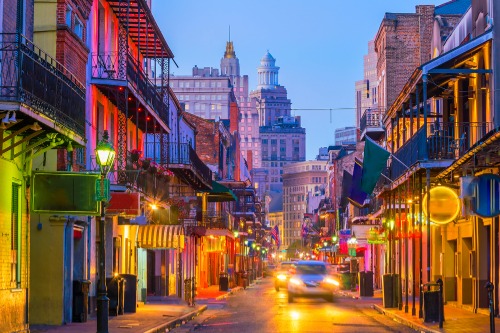
New Orleans is a city that continues to grapple with economic inequality, long after the devastation caused by Hurricane Katrina. While the city has seen some recovery in recent years, many of the same challenges persist. The job market is still struggling, with many jobs in the service industry that do not provide sufficient wages to support a family. Housing costs have risen, especially in certain parts of the city, making it harder for low-income residents to stay.
The storm left a lasting impact on the city’s infrastructure, and while much rebuilding has occurred, certain neighborhoods still bear the scars of that devastation. These neighborhoods often suffer from high poverty rates, inadequate schools, and a lack of access to good healthcare. New Orleans has not recovered equally, and many people find that the promise of upward mobility and a secure future remains elusive. For those living on the margins, the American Dream feels out of reach, overshadowed by ongoing systemic challenges that leave many behind.
15. Stockton, California
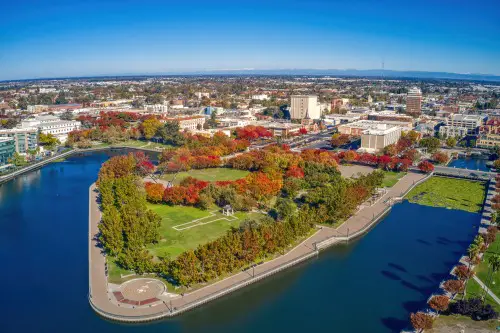
Stockton, a city in California’s Central Valley, has seen a rise in poverty and crime despite being located in one of the richest agricultural regions in the country. Once known for its booming agricultural industry, Stockton has been hit hard by the collapse of the housing market during the 2008 recession and the subsequent struggles with high unemployment rates. While the city has tried to reinvent itself by attracting tech companies, it still faces significant challenges.
The city has high rates of homelessness and an education system that struggles to provide quality resources to its students. The housing market has remained unstable, with many homes in foreclosure or in need of repair. In addition, crime rates remain above the national average, contributing to a sense of instability and insecurity among many residents. For Stockton’s struggling families, the dream of owning a home or securing a well-paying job seems increasingly far-fetched, as the city’s economic challenges continue to deepen. With limited job opportunities and few signs of improvement, the American Dream is becoming harder to reach in Stockton.


